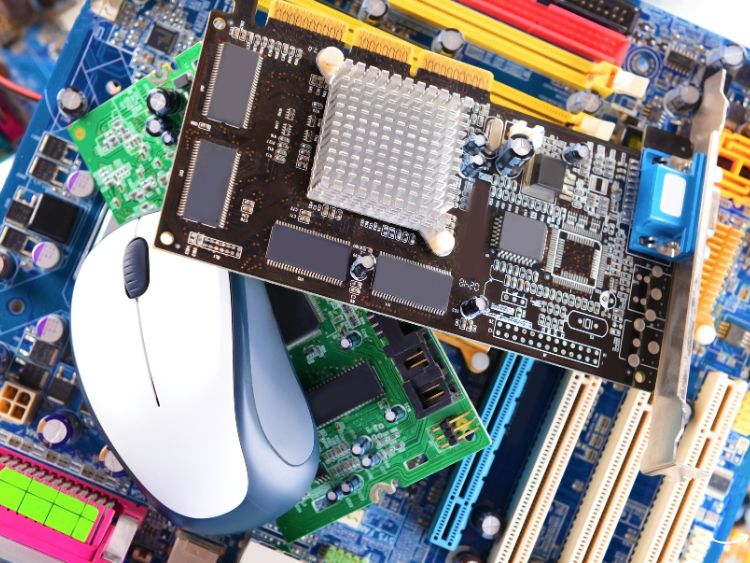Ever wonder why your computer starts acting sluggish or why the fan starts whirring like a mini jet engine? If you’re scratching your head, pondering over these quirks, you’re not alone. Computer hardware monitoring software can be a game-changer, ensuring your system runs smoothly by keeping an eye on its vital signs. This article will delve into what computer hardware monitoring software is, its benefits, key features, and how to choose the best one for your needs. So, buckle up and get ready to optimize your computer’s performance!
What is Computer Hardware Monitoring Software?
Computer hardware monitoring software is a tool designed to keep track of your computer’s hardware components. It monitors aspects such as CPU temperature, fan speeds, voltages, and usage levels of various components like the GPU and RAM. By providing real-time data and alerts, this software helps prevent hardware failures and ensures your system operates efficiently.
Benefits of Using Computer Hardware Monitoring Software
Prevent Overheating
One of the primary benefits of using hardware monitoring software is preventing overheating. Overheating can lead to serious damage, causing your computer to shut down unexpectedly or, worse, frying critical components. With monitoring software, you can keep tabs on your CPU and GPU temperatures, ensuring they stay within safe limits.
Prolong Hardware Lifespan
By keeping your hardware components in check, you can significantly extend their lifespan. Monitoring software alerts you to potential issues before they escalate, allowing you to take preventative measures.
Improve System Performance
When your computer is running hot or certain components are overworked, performance can take a hit. Monitoring software helps you identify bottlenecks and optimize your system for better performance.
Real-Time Alerts
Real-time alerts are a crucial feature of hardware monitoring software. These alerts notify you of any anomalies, such as high temperatures or unusual fan speeds, so you can address issues promptly.
Key Features to Look For
User-Friendly Interface
A user-friendly interface is essential for any monitoring software. It should be easy to navigate, with clear and concise data presentation.
Comprehensive Monitoring
The software should offer comprehensive monitoring of all critical hardware components, including CPU, GPU, RAM, and storage devices.
Customizable Alerts
Customizable alerts allow you to set thresholds for various parameters, ensuring you get notified when something goes awry.
Compatibility
Ensure the software is compatible with your operating system and hardware. Some monitoring tools are designed specifically for certain brands or types of hardware.
Historical Data
Access to historical data can be invaluable. It allows you to track performance trends over time and identify recurring issues.
Top Computer Hardware Monitoring Software
1. HWMonitor
HWMonitor is a popular choice for hardware monitoring. It provides detailed information on temperatures, voltages, and fan speeds. Its user-friendly interface makes it accessible for both novices and experts.
2. MSI Afterburner
MSI Afterburner is not just for overclocking; it also offers robust hardware monitoring features. It’s compatible with a wide range of hardware and provides real-time data.
3. Open Hardware Monitor
Open Hardware Monitor is a free, open-source tool that supports a variety of hardware components. It offers extensive monitoring capabilities and is highly customizable.
4. SpeedFan
SpeedFan is a versatile tool that monitors temperatures, voltages, and fan speeds. It also allows you to control fan speeds manually, which can be useful for managing noise levels.
FAQs
What is computer hardware monitoring software?
Computer hardware monitoring software is a tool that tracks and reports on the status of various hardware components in your computer, such as CPU temperature, fan speeds, and voltages.
Why do I need hardware monitoring software?
Hardware monitoring software helps prevent overheating, prolongs hardware lifespan, improves system performance, and provides real-time alerts for potential issues.
Can hardware monitoring software fix my computer?
While monitoring software itself doesn’t fix issues, it alerts you to problems so you can take corrective action before they cause serious damage.
Is there free hardware monitoring software available?
Yes, there are several free options available, such as Open Hardware Monitor and HWMonitor.
Summary
Computer hardware monitoring software is an essential tool for anyone looking to maintain their computer’s health and performance. By monitoring critical components, providing real-time alerts, and offering detailed insights, these tools help prevent damage, extend hardware lifespan, and ensure your system runs smoothly. Whether you’re a tech novice or a seasoned pro, incorporating hardware monitoring software into your routine can save you time, money, and a lot of headaches.
Authoritative Links
- Open Hardware Monitor: http://openhardwaremonitor.org/
- HWMonitor: https://www.cpuid.com/softwares/hwmonitor.html
- MSI Afterburner: https://www.msi.com/page/afterburner
- SpeedFan: http://www.almico.com/speedfan.php
By incorporating these tips and utilizing top-tier computer hardware monitoring software, you can ensure your system remains in top-notch condition. Keep those fans whirring gently and your components cool, and you’ll enjoy a smooth, efficient computing experience for years to come!

